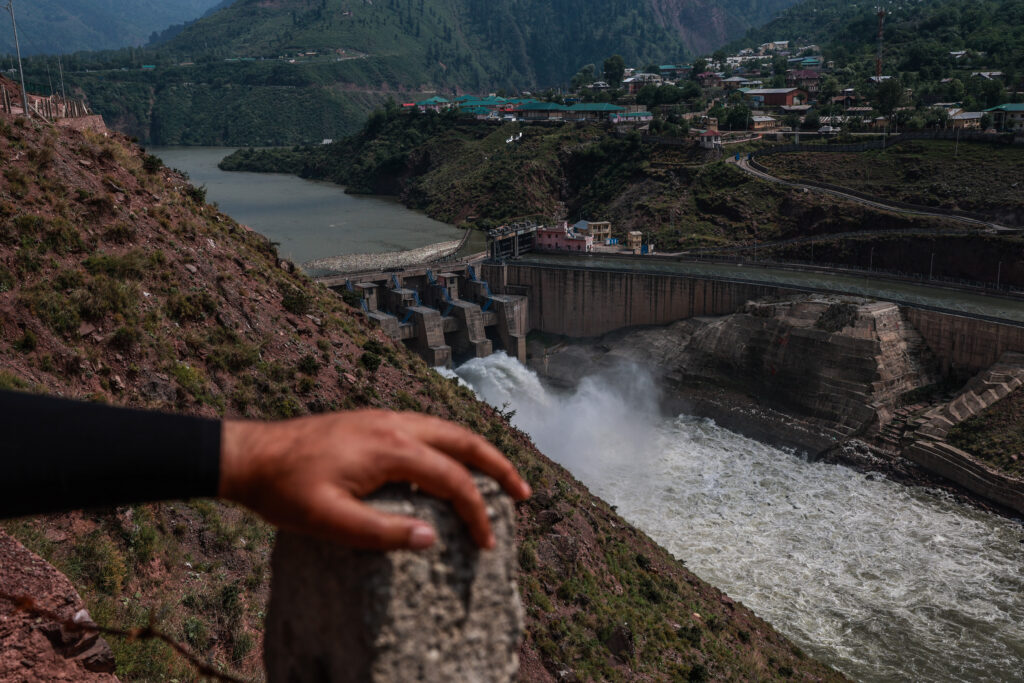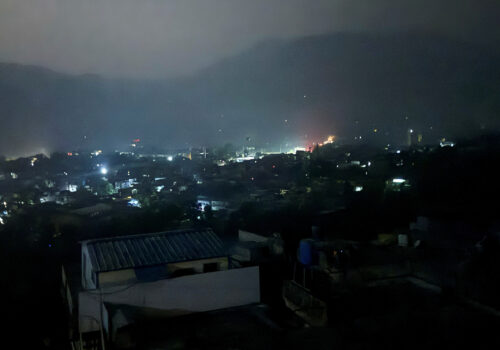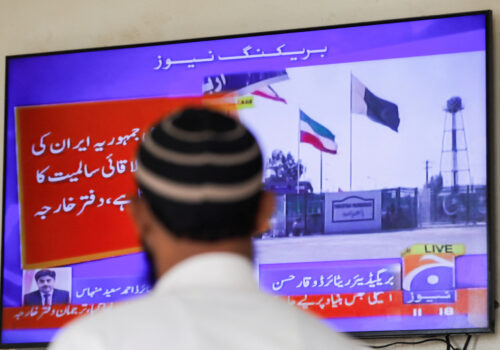Now that both India and Pakistan have executed their military responses to each other’s real or perceived actions against the other in Kashmir, good sense has prevailed in the shape of a cease-fire. If the announcement holds, this stops the ratcheting up of hostilities that were putting both nuclear-armed rivals on a steep escalation ladder. Historically, both sides try to gain some tactical advantages by extending the cease-fire limits. And there are many trigger-happy local commanders on both sides of the line of control in Kashmir, which would explain reports of clashes in the hours after the cease-fire announcement.
I am hearing from Pakistani sources that the agreement to cease hostilities emerged after closed and direct talks between the directors general of military operations of both armies and representatives of the two national security advisors. It helped that in the case of Pakistan, the national security advisor, Lt. Gen. Asim Malik, was also the current director general of the Inter-Services Intelligence (likely preparing himself for that generally civilian role post-retirement in a few months). Helping the process to put the lid on this regional flashpoint was the behind-the-scenes encouragement of US President Donald Trump, his Secretary of State Marco Rubio, and possibly Saudi Arabia.
What next? Having raised domestic emotions to a high pitch, leaders on both sides will want to take a much-needed pause and then begin the process of what Rubio identified as the beginning of “talks on a broad set of issues at a neutral site.” It will be interesting to see what is considered a neutral site. The Gulf is one possibility.
Three main items should be on the agenda.
1. The Indus Basin Water Treaty
Front and center should be the discussion of the effects of climate change on both India and Pakistan and the need to update the Indus Basin Water Treaty, originally agreed upon with US help and under the aegis of the World Bank. That treaty, signed in 1960, took nine years of negotiation. Both countries have been dancing around the shared waters issue in the past. India recently unilaterally abrogated the treaty—a debatable action. Regardless, the Himalayan and Karakoram glaciers feeding their rivers are declining, and time is running out for measures to counteract that reality. Both nations will suffer the consequences of dying waterways. Moreover, the shared aquifers of the Indian and Pakistani Punjabs badly need recharging. The misuse of tubewells has dropped the water tables, and overwatering has produced waterlogging and salinity. Combined efforts to revive underground water resources will help fight climate change. Otherwise, agriculture will suffer, and the population may die of thirst.
Specifically, an updated treaty may need to recognize the need for India, the upper riparian, to build dams with gateways to release water and accumulated silt periodically—because silt reduces the life of dams—while keeping in the mind the timing of releases so it does not harm Pakistan, the lower riparian. So there should be no releases when crops are being planted or harvested. This is a practical issue that needs to be addressed quickly, without making it a politically charged discussion. Even within India itself, there are major disputes between administrative divisions that are upper or lower riparians. This should inform Indian thinking.
2. Armed extremist groups
Talks between India and Pakistan must also address the role or acceptance of extremist right-wing religious groups in Pakistan that may have a dual purpose—to educate poor children and to prepare them for potential militant activities in neighboring countries, including India. At different times, Pakistani leaders have announced measures to clamp down on such activities, but these militant groups survive by reinventing themselves and using the lax banking system to move their ample funding with ease to safe accounts.
Pakistan needs to recognize the inherent danger to the state of armed non-state actors within its borders, so that its military retains the monopoly of armed force in Pakistan. Its civilian population is heavily equipped with military weapons, especially now that some of the vast supply of US arms left behind in Afghanistan have found their way east into Pakistan. The civilian licensing system for weapons is a sieve. The fraught relations with the Taliban government have complicated that situation no end, propelling Pakistan to even launch attacks across the border against Pakistani rebel groups like the Tehreek-e-Taliban of Pakistan that have gained sanctuary in Afghan territory.
3. Regional trade
On the more positive side, India and Pakistan need to end their ban on trade with each other, and even consider opening their borders to travel, under the aegis of the South Asian Association for Regional Cooperation Visa Exemption Scheme or by mutually agreed visa-on-arrival facilities. (This has worked for Sikh pilgrims visiting their holy sites in Pakistan.) This action would potentially boost bilateral trade to pre-1947 Partition levels and rise from the current millions to above forty billion dollars a year, according to a 2010 study by Mohsin Khan of the Peterson Institute for International Economics. Visa-free travel would immediately allow trade between small- and medium-sized enterprises. And travel by ordinary citizens would help them better know and understand each other, rather than be affected by the caricatures that social media influencers have produced over the years.
Beyond these advantages, opening the borders would allow India to trade with Afghanistan and Central Asia through Pakistan, and both countries would benefit from cheap and clean energy from Kyrgyzstan and Tajikistan, as well from Uzbekistan. Afghanistan would benefit from transit fees. And if US sanctions are eventually eased on Iran, the dormant Iran-Pakistan-India pipelines could allow gas to flow into India.
So much could be achieved, given the political vision and will in both India and Pakistan, and active support from China, the Arabian Peninsula, and the United States, among others. If governments in South Asia are prepared to invest in their own futures, what has been a flashpoint could become the center of gravity for economic development and stability in Asia. There could be another Nobel Peace Prize, or two or three, in the offing.
Shuja Nawaz is a distinguished fellow at the Atlantic Council’s South Asia Center and the author of The Battle for Pakistan: The Bitter US Friendship and a Tough Neighbourhood and Crossed Swords: Pakistan, its Army, and the Wars Within.
Further reading
Image: Water flows from the Lower Jehlum Hydel Project Dam (LJHP) over the Jhelum River in Baramulla, Jammu and Kashmir, India, on May 6, 2025. India cuts water flow to Pakistan through the Baglihar dam after the Indus Treaty suspension. (Photo by Nasir Kachroo/NurPhoto)



